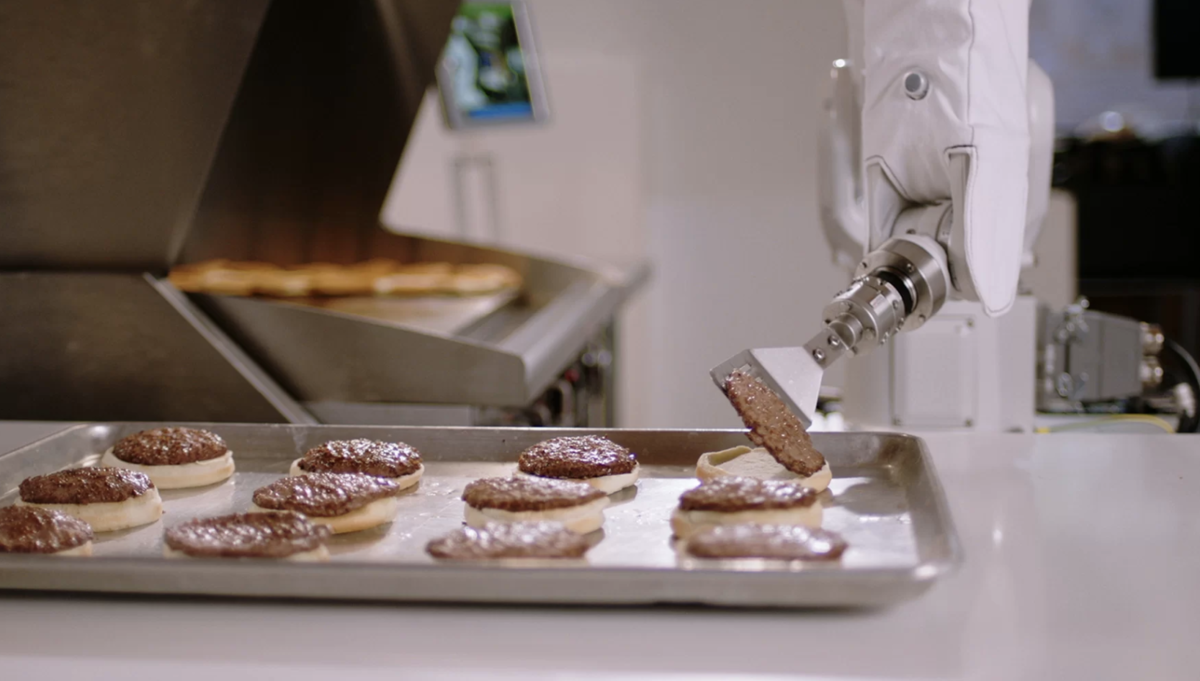According to Greg Creed, CEO of Yum Brands, artificial intelligence (AI), robots and automation could replace humans in the food services industry by the mid-2020s (McGee 2017). Moreover, a new global study by Oracle, entitled Restaurant 2025, has found that fast and accurate drone food deliveries, 3D printing of unappetizing food into nutritious meals, voice activated responses, virtual reality and biometric diner recognition are all set to transform the dining experience (Karantzavelou 2017).
The widespread adoption of AI will impact on not only customers’ dining experience but also the operation of restaurants, like how restaurants employ and utilize staff. “It’s not actually meant as a labor replacement. We can just reapportion that labor into more service orientated roles that we think the customer will benefit both ways.” said Steve Easterbrook, CEO of McDonald’s (Bomey & Meyer 2017). Although the use of smart kiosks in McDonald’s has been regarded as a way to save labor costs, they assign humans to duties that can not be completed by machines.
The benefits of AI in the restaurant industry extend beyond robots taking orders, making and delivering food. It reduces expenses while increasing efficiency in meal preparation and decreasing human error rate during peak hours. However, there are still some risks in implementing AI in restaurants. Not only is the cost of development high but also the technology is not mature enough to adapt all kinds of environments. Besides, it might increase unemployment and can also result in increased inefficiency, for instance, Caliburger hired “Flippy the burger-flipping robot” and fired after just one day at work (Miley 2018). “When you’re in the back, working with people, you talk to each other. With Flippy, you kind of need to work around his schedule.” says Anthony Lomelino, the chief technology officer for Cali Group (Austin 2018). Despite the risks involved in using AI, some restaurants continue to develop this technology because they believe that the advantages overshadow the disadvantages. Restaurants around the world have been implementing Robotics, Smart Kiosks, Chatbots and Food Service App, trying to improve customer experience.
In my opinion, I am not so convinced in implementing so many AI in a dining environment. Making reservations, ordering, food delivery and even the food we eat can be done by AI machines. For me, restaurant is a place for people to interact. The advancement of AI technology diminished the temperature of interaction between people and people. It is the calculation of the AI machines instead of the consideration of the restaurants’ staffs that meets consumers’ need and expectation. It will definitely take some time for people with conservative mind like me to get use to the change in restaurant experience.
Sources:
Austin, M. (2018). Flippy gets fired: Burger bot shut down after one day on the job. [online] Digitaltrends. Available at: https://www.digitaltrends.com/cool-tech/flippy-burger-flipping-robot-shut-down/ [Accessed 30 Sep. 2018].
Bomey, N. and Meyer, Z. (2017). McDonald’s fast-food ordering kiosks will boost sales, analyst says. [online] usatoday. Available at: https://eu.usatoday.com/story/money/2017/06/23/mcdonalds-fast-food-kiosks/423501001/ [Accessed 30 Sep. 2018].
Karantzavelou, V. (2017). Consumer attitudes on emerging technologies and their impact on future hospitality experiences. [online] TravelDailyNews International. Available at: https://www.traveldailynews.com/post/consumer-attitudes-on-emerging-technologies-and-their-impact-on-future-hospitality-experiences [Accessed 30 Sep. 2018].
McGee, C. (2017). In a decade, many fast-food restaurants will be automated, says Yum Brands CEO. [online] CNBC. Available at: https://www.cnbc.com/2017/03/28/in-a-decade-many-fast-food-restaurants-will-be-automated-says-yum-brands-ceo.html [Accessed 29 Sep. 2018].
Miley, J. (2018). Flippy the Burger-Making Robot was Fired After Just One Day at Work. [online] Interestingengineering. Available at: https://interestingengineering.com/flippy-the-burger-making-robot-was-fired-after-just-one-day-at-work [Accessed 30 Sep. 2018].


Dear Yu-Chieh, thank you for brining up this interesting topic!
We do have to admit that having AIs taking over some of our tasks is becoming an inevitable trend, but I do hold a strong belief that some tasks in our daily lives can never be completely replicated by machines. That is the tasks that not only require skills, but also reflects the spirit or soul of the implementer. Tasks in restaurants are typical examples.
I remember watching a documentary called Jiro Dreams of Sushi, which tells about how the sushi chef Jiro strives to achieve perfection in the ways he makes sushi. It is the dedication and care he put into his sushi, as well as the stories behind those creations, that make the sushi extraordinarily tasteful and unique. Customers don’t go to his restaurant simply for food, but for the special memories and feelings they can experience by eating the sushi served by Jiro. If one day, robot restaurants become a norm, it can totally be expected that restaurants still served by humans would be extremely treasured.
Nevertheless, I do think that for certain types of restaurant, such as those serving fast foods or located at gas stations, can be served completely by robots. Since the need for highly interactive and caring waiters is relatively low in these scenarios. What the food industry should think carefully is the extent to which they make use of the robots. If managed properly, no doubt both the efficiency and quality of services will largely increase; if not, high level of dissatisfactions among customers can then be expected.